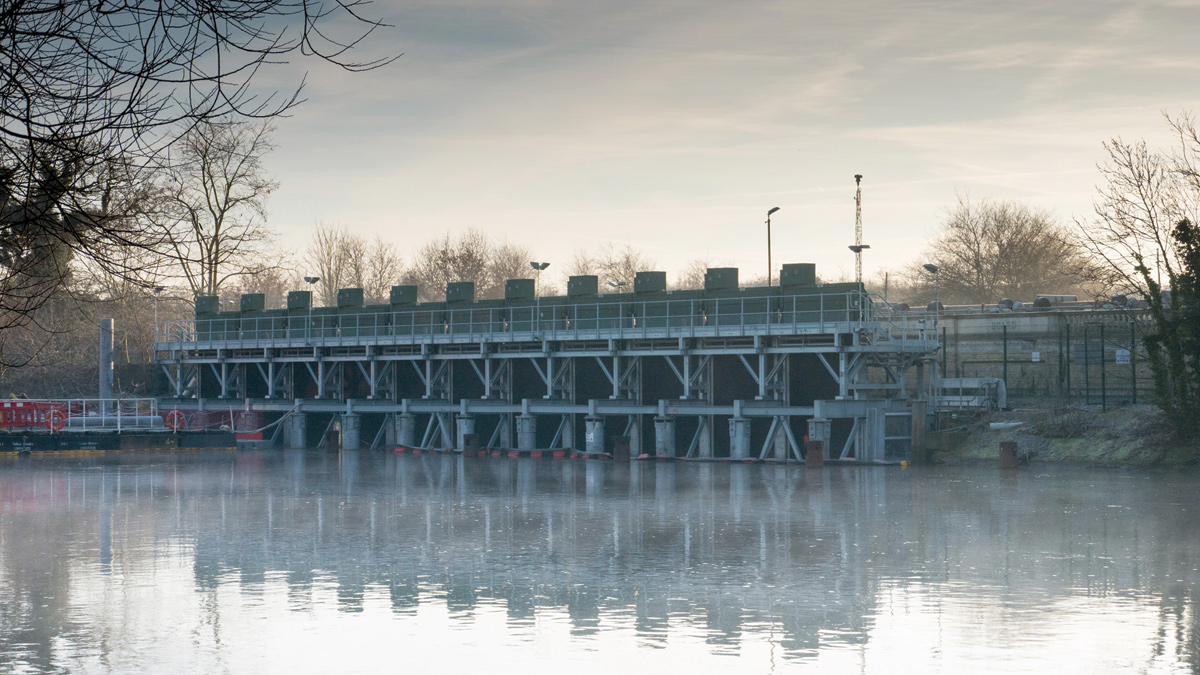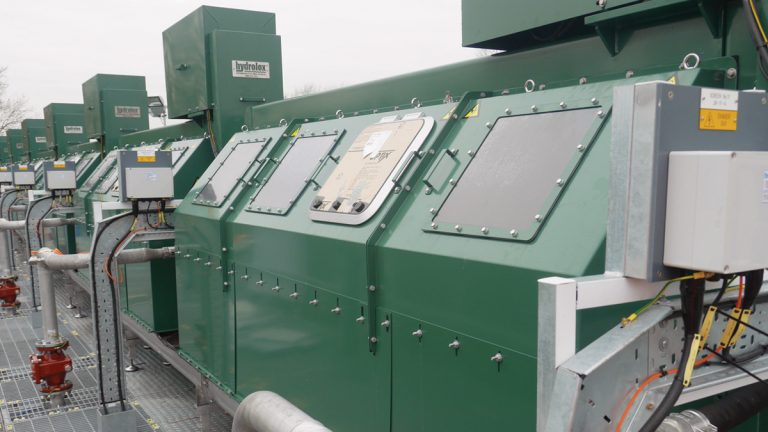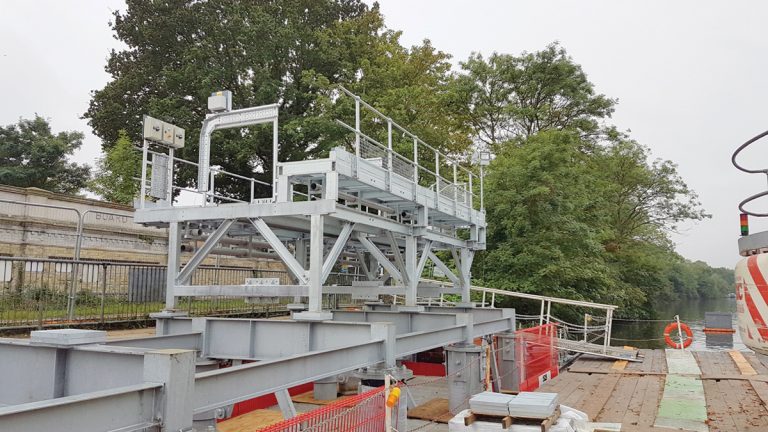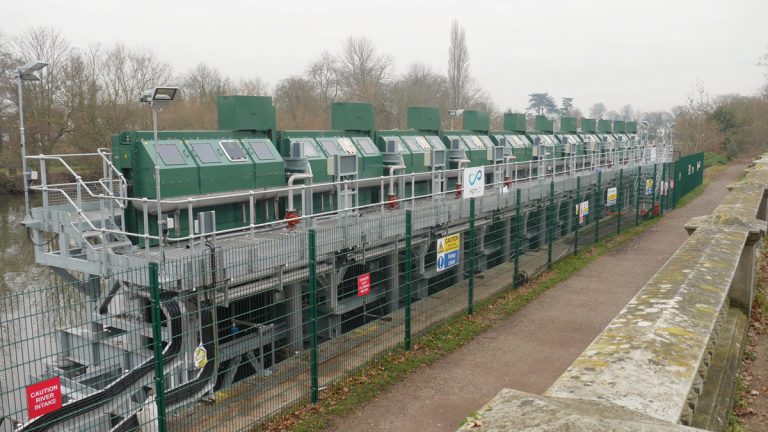Walton Eel Screens (2017)

Walton eel screens (river side) - Courtesy of eight2O
In January 2010 the Eels (England and Wales) Regulations 2009 came into force which gave the Environment Agency new powers to protect and to conserve the population of eels in the rivers of England and Wales. The abstraction point for Thames Water’s Walton Advanced Water Treatment Works in Walton, Surrey, removed a maximum of 900ML/D of water from the River Thames, which is critical for maintaining the reservoir levels for London’s water supply. To fulfil the requirements of the Eel Regulations, Thames Water was required to undertake the Walton Eel Screens Project as part of the AMP6 programme of works and this was delivered by eight2O.
Introduction
The projects two main subcontract partners were Hydrolox, the supplier of the screens, and Bridges Electrical who provided the mechanical and electrical installation service, including the off-site construction of the modular screen support structure and the motor control centre (MCC).
Due to the location of the abstraction intake, the project had to be delivered from the River Thames using barges to transport and store materials, with pontoons providing the working platform for plant operations.
This system of delivery drastically reduced the amount of work that needed to be carried out over the water and allowed for safe access to the structure as soon as it was installed due to the assembly already having safety railings fitted. The project was delivered during the period of the year where abstraction is high and was completed without causing any unplanned disruption to the rate of abstraction.

Installed screen from platform – Courtesy of eight2O
The screens
The Hydrolox screens used at the Walton Eel Screens Project are a travelling band screen with 1.75mm openings to allow for the water to pass through. The opening was sized to this level to prevent the elvers from passing through the screens and into the intake channel.
The issue with having the screen mesh this fine though was that the approach velocity of the water onto the screen would be too high for the elvers to escape, which would cause them to become pinned to the screen. This issue was overcome through the lengthening of the screen structure to increase the surface area of screen that the water could pass through to the point where the velocity was low enough to allow the elvers and other wildlife in the river to escape the flow.
The fine mesh would also be prone to blocking due to the large amount of debris that can be present in the Thames. The screens are able to wash themselves when triggered by the conditions set in the control system. This process involves the screen material being rotated up from the river and through a washing system, where the screen is cleaned by the washwater system into a trough and returned to the river.
Project delivery
The delivery of the project required a pile structure to be installed in the bed of the river, a support structure for the screens, MCC control systems and software modifications to be carried out on the site.

Steelwork module during installation – Courtesy of eight2O
The piling operation had to be preceded by a coring operation to allow for the piles to be installed through an existing concrete structure on the bed of the river. Once the piles had been installed the pile frame could be attached to provide the base for the support steelwork.
The support steelwork was assembled off site in a fabrication facility provided by Bridges. The structure was provided as 11 (No.) separate modules, each of which came with cable trays, local control boxes, flooring and hand railing installed. The modules were loaded onto barges from the access point to the river and transported to the site for installation. The 11 (No.) modules were installed over a period of two days, with the cassettes to hold the screens being installed as the main structure was assembled.
While the modules were installed the cabling to the control kiosk could be connected in preparation for the installation of the screens. The installation process of the screens was carefully controlled as the screens had to be run soon after installation to prevent excessive blinding. Excessive blinding of the screens would also begin to affect the abstraction rate of the intake.

Walton eel screens – Courtesy of eight2O
Summary/conclusion
Having started in July 2016 and delivered through the difficult winter conditions on the river, the project was fully commissioned and handed over to Thames Water in April 2017 on time and under budget. The modular design of the steelwork allowed for the rapid and safe delivery of a key activity. This system of work will be adopted where possible on the remaining projects in the portfolio of eel screen works.




